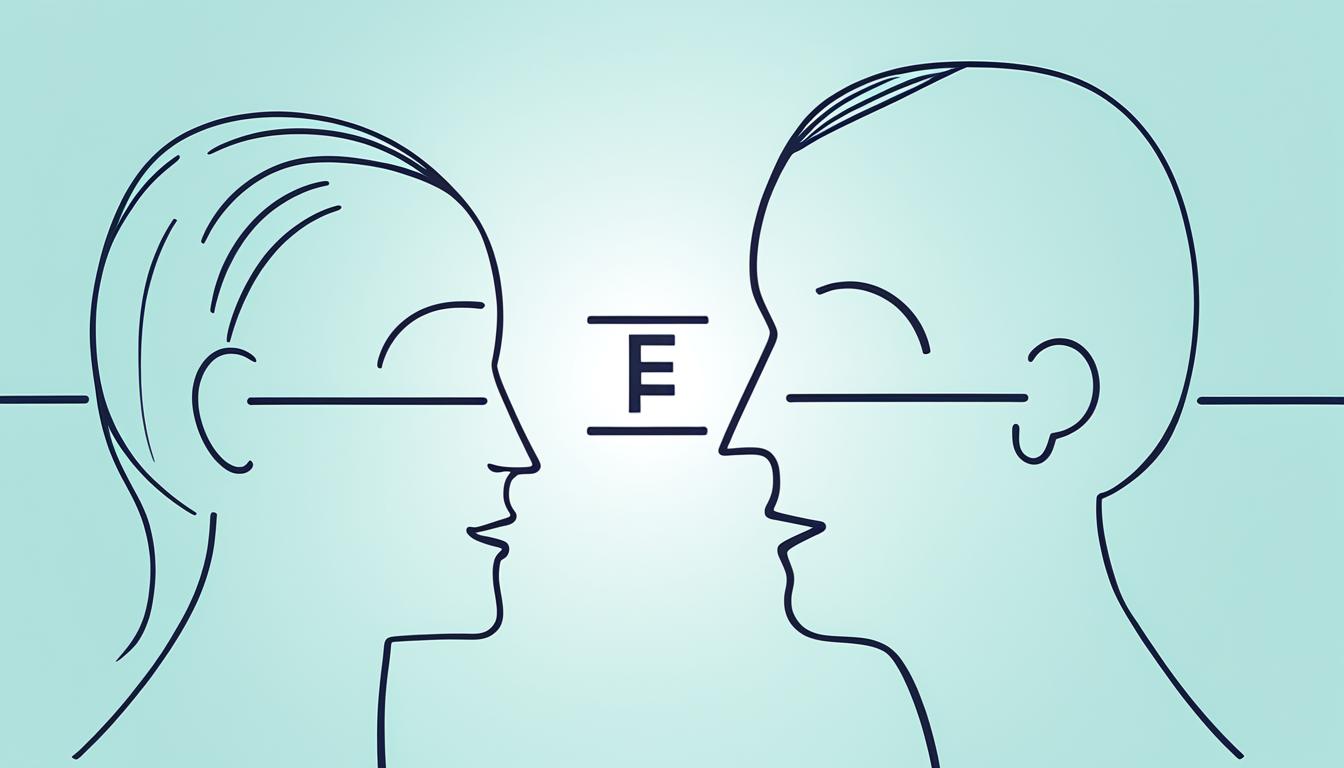Building healthy and fulfilling relationships requires an understanding of the complex dynamics that shape our connections with others. Whether it’s a romantic partnership, a familial bond, or a platonic friendship, managing expectations and setting boundaries is crucial for nurturing strong and harmonious relationships.
Expectations in a relationship can vary greatly, ranging from emotional support and shared values to time and effort invested in the partnership. It is important to remember that everyone brings their own unique set of expectations based on their experiences, desires, and beliefs. Navigating these expectations requires open communication, empathy, and a willingness to compromise.
Setting boundaries is another vital aspect of relationship dynamics. Boundaries help define what is acceptable and what crosses the line, ensuring that both individuals feel respected and comfortable within the relationship. Establishing clear boundaries can prevent misunderstandings, conflicts, and the erosion of trust.
Key Takeaways:
- Understanding and managing expectations is crucial for healthy relationships.
- Open communication, empathy, and compromise are essential in navigating expectations.
- Setting clear boundaries promotes respect, comfort, and trust within the relationship.
- Each individual brings their own unique set of expectations based on their experiences and beliefs.
- Nurturing strong relationships involves constant communication and adaptability.
What Are Relationship Dynamics?
Relationship dynamics refer to the patterns of interactions and behaviors between individuals in any kind of relationship. It encompasses various key elements that shape the overall health and quality of a relationship. These elements include:
- Effective communication: Communication is the foundation of any successful relationship. It involves actively listening, expressing oneself honestly, and understanding each other’s perspectives.
- Trust: Trust is built over time through consistent actions and open communication. It forms the basis for emotional intimacy and creates a sense of security within the relationship.
- Boundaries: Setting and respecting boundaries is essential in maintaining a healthy dynamic. Boundaries define the limits and expectations within the relationship, ensuring that both individuals feel comfortable and respected.
- Conflict resolution: Conflict is a natural part of any relationship, but how it is resolved can significantly impact the relationship dynamics. Effective conflict resolution involves active listening, empathy, and finding mutually agreeable solutions.
- Power and equality: Power dynamics can influence relationships. It is important to strive for equality and mutual respect, ensuring that both individuals have an equal voice in decision-making and feel valued within the relationship.
- Emotional intimacy: Emotional intimacy involves being vulnerable and sharing deep emotions with your partner. It is built through trust, open communication, and a willingness to connect on a deeper level.
- Time and effort: Relationships require time and effort to nurture and grow. Investing quality time in the relationship helps to strengthen the bond and deepen the connection between individuals.
- Compatibility: Compatibility refers to the alignment of values, interests, and goals between partners. It contributes to the overall compatibility and can influence the dynamics of the relationship.
- Adaptability: Relationships are not static; they evolve and change over time. Being adaptable and willing to navigate new challenges and circumstances is crucial for maintaining a healthy relationship dynamic.
Understanding and navigating these relationship dynamics is essential for building and sustaining healthy and fulfilling connections with others. By prioritizing effective communication, trust, boundaries, conflict resolution, power and equality, emotional intimacy, time and effort, compatibility, and adaptability, individuals can create lasting and meaningful relationships.

What Are the Different Types of Relationship Dynamics?
Relationships come in various forms, each with its own unique dynamics. Understanding these dynamics is crucial for building healthy and fulfilling connections with others. Let’s explore some of the different types of relationship dynamics:
Romantic Dynamics
Romantic dynamics involve intimate relationships between partners. These dynamics encompass love, passion, attraction, and deep emotional connections.
Platonic Dynamics
Platonic dynamics refer to non-romantic friendships characterized by mutual affection, trust, and shared interests without any romantic or sexual involvement.
Familial Dynamics
Familial dynamics involve relationships within a family, including parent-child, sibling, and extended family relationships.
Professional Dynamics
Professional dynamics refer to relationships in work or business settings. These dynamics involve collaboration, teamwork, and the establishment of hierarchies and boundaries.
Toxic Dynamics
Toxic dynamics are characterized by unhealthy patterns of behavior, such as manipulation, control, abuse, and lack of respect. These dynamics can be detrimental to one’s well-being and should be addressed and resolved as soon as possible.
Codependent Dynamics
Codependent dynamics occur when one person excessively relies on another for their own emotional well-being, often resulting in an imbalanced and unhealthy relationship.
Long-Distance Dynamics
Long-distance dynamics involve relationships where physical distance separates the individuals involved. These dynamics require extra effort, trust, and effective communication to maintain a strong connection.
Open or Polyamorous Dynamics
Open or polyamorous dynamics involve non-monogamous relationships where individuals have multiple romantic or sexual partners with the knowledge and consent of all parties involved.
Mentorship or Teacher-Student Dynamics
Mentorship or teacher-student dynamics involve a learning relationship where a more experienced individual guides and supports the growth and development of a less experienced individual.
Online Dynamics
Online dynamics refer to relationships that primarily exist and develop in virtual spaces, such as social media platforms, online communities, and dating applications.
Parent-Child Dynamics
Parent-child dynamics encompass the relationships between parents and their children, involving responsibilities, guidance, support, and unconditional love.
Each type of relationship dynamic has its own set of characteristics and challenges. It’s important to recognize that the health and quality of a relationship can vary within each type. Understanding these dynamics and actively working on nurturing and maintaining healthy connections is key to building fulfilling relationships.
What Is the Ideal Dynamic of a Relationship?
The ideal dynamic of a relationship is characterized by mutual respect, open communication, trust, and a strong emotional connection. In an ideal relationship, both individuals feel loved, respected, and valued, fostering a sense of happiness and fulfillment. It is important to note that the ideal dynamic may evolve and adapt over time to accommodate the changing needs and circumstances of both partners.
When it comes to relationships, having a solid foundation of mutual respect is crucial. This means valuing each other’s opinions, decisions, and boundaries. It involves treating each other with kindness, understanding, and empathy. By showing respect, you create a safe and supportive environment where both partners can flourish.
Open communication is the cornerstone of a healthy relationship. It involves actively listening and expressing your thoughts, feelings, and needs. Communicating openly allows you to understand each other better, resolve conflicts, and foster deeper emotional intimacy.
Trust is another vital element in an ideal dynamic. It is the belief that your partner is reliable, honest, and committed to the relationship. Trust allows you to be vulnerable, knowing that your partner will honor and protect your emotions, secrets, and boundaries.
An emotional connection forms the heart and soul of a relationship. It’s the deep bond and understanding that you share with your partner. An emotional connection goes beyond physical attraction, providing comfort, support, and a sense of belonging. It nurtures intimacy and strengthens the relationship.
Remember, the ideal dynamic of a relationship is unique to each couple. What works for one may not work for another. It’s essential to build a relationship based on mutual understanding, continuous growth, and adapting to the changing needs and circumstances of both partners.
The Basics of Relationship Dynamics
Relationship dynamics are the foundation on which healthy and fulfilling relationships are built. Understanding and managing the basics of relationship dynamics, including trust, communication, power dynamics, emotions, and boundaries, is essential for nurturing strong connections with others.
Trust
Trust forms the bedrock of any successful relationship. It is the belief in the reliability, integrity, and honesty of your partner. Trust is cultivated through consistent actions that align with your words, maintaining confidentiality, and demonstrating reliability and dependability. Without trust, a relationship may suffer from insecurity and lack of intimacy.
Communication
Effective communication is crucial for fostering understanding and resolving conflicts. It involves active listening, where you genuinely hear and seek to understand your partner’s thoughts and feelings. Open and honest expression is equally important, allowing both individuals to articulate their needs, desires, and concerns. Constructive communication builds a strong connection and helps avoid misunderstandings and resentments that may harm the relationship.
Power Dynamics
“In every relationship, there is a power dynamic at play. The key is to strive for a balance, where both partners have an equal say and feel empowered in decision-making. By recognizing and addressing any inequalities, you can ensure a healthy and fair distribution of power within the relationship.”
Emotions
Emotions are an integral part of any relationship. Understanding and navigating emotions with emotional intelligence is vital for maintaining harmony and resolving conflicts. It involves recognizing and expressing emotions in a healthy and constructive manner, while also validating and empathizing with your partner’s feelings. Emotional intelligence fosters emotional connection and supports the overall well-being of the relationship.
Boundaries
Boundaries establish the limits of a relationship and define what is acceptable and respectful. They help establish individual autonomy and ensure that personal needs and values are respected. By establishing and communicating boundaries, both partners can feel secure, and conflicts arising from crossed boundaries can be minimized.
Having a clear understanding of the basics of relationship dynamics, including trust, communication, power dynamics, emotions, and boundaries, is fundamental in nurturing healthy and fulfilling relationships. By actively embracing and managing these aspects, you can lay a solid foundation for a strong and meaningful connection with your partner.

Conclusion
Navigating expectations in a relationship and understanding relationship dynamics are crucial for creating healthy and fulfilling connections with others. The foundation of a successful relationship lies in fostering open communication, respect, trust, and emotional connection. By actively working on these elements, individuals can navigate the complexities of relationships and build lasting happiness and fulfillment.
To build healthy relationships, it is essential to set realistic expectations. Unrealistic expectations can lead to disappointment and strain the relationship. It is important to have open and honest conversations about each other’s needs, desires, and boundaries. This allows for a better understanding of what each partner expects, leading to a more balanced and harmonious relationship.
Relationship dynamics are not static; they evolve, change, and adapt over time. It is crucial to be flexible and adaptable as the relationship progresses. By recognizing and adjusting to shifting dynamics, individuals can maintain a healthy and fulfilling connection. This involves continuous effort, active listening, and a willingness to communicate openly about any challenges that arise.
In summary, navigating expectations in a relationship and understanding relationship dynamics are vital for nurturing and maintaining healthy connections. By prioritizing open communication, respect, trust, and emotional connection, individuals can create lasting happiness and fulfillment in their relationships. Remember to set realistic expectations, adapt to changing dynamics, and continuously work on nurturing the relationship for long-term success.
FAQ
What are some tips for managing expectations in a relationship?
Managing expectations in a relationship involves open and honest communication, setting realistic boundaries, and actively listening to your partner’s needs. It is important to have a mutual understanding of each other’s expectations and to adapt and compromise when necessary.
How can I navigate relationship dynamics effectively?
Navigating relationship dynamics requires effective communication, trust-building, conflict resolution skills, and emotional intelligence. It is essential to establish and maintain boundaries, prioritize equality and shared values, and be adaptable to changes in the relationship.
What are the key elements of healthy relationship expectations?
Healthy relationship expectations include mutual respect, open and honest communication, trust, emotional intimacy, and shared values. It is important to have realistic expectations, set boundaries, and continuously work on nurturing the relationship.
How do different types of relationship dynamics affect the health of a relationship?
Different types of relationship dynamics, such as romantic, platonic, familial, and professional dynamics, can impact the health of a relationship. Understanding the unique characteristics and challenges of each type can help in navigating and building fulfilling connections.
How can I establish a strong emotional connection in a relationship?
Building a strong emotional connection in a relationship involves open and honest communication, active listening, empathy, vulnerability, and shared experiences. It is crucial to prioritize emotional intimacy and make time and effort to connect on a deeper level.
How do power dynamics influence relationships?
Power dynamics can influence relationships by affecting the balance of control and decision-making. It is important to strive for equality in a relationship, ensuring that both partners have a voice, and recognizing and addressing any power imbalances.
Source Links
- https://anchorlighttherapy.com/expectations-in-a-relationship-a-reality-check/
- https://holdinghopemft.com/navigating-expectations-in-a-relationship-a-roadmap-for-couples/
- https://thriveworks.com/help-with/relationships/relationship-dynamics/


